Yining Zheng
R3-RAG: Learning Step-by-Step Reasoning and Retrieval for LLMs via Reinforcement Learning
May 26, 2025Abstract:Retrieval-Augmented Generation (RAG) integrates external knowledge with Large Language Models (LLMs) to enhance factual correctness and mitigate hallucination. However, dense retrievers often become the bottleneck of RAG systems due to their limited parameters compared to LLMs and their inability to perform step-by-step reasoning. While prompt-based iterative RAG attempts to address these limitations, it is constrained by human-designed workflows. To address these limitations, we propose $\textbf{R3-RAG}$, which uses $\textbf{R}$einforcement learning to make the LLM learn how to $\textbf{R}$eason and $\textbf{R}$etrieve step by step, thus retrieving comprehensive external knowledge and leading to correct answers. R3-RAG is divided into two stages. We first use cold start to make the model learn the manner of iteratively interleaving reasoning and retrieval. Then we use reinforcement learning to further harness its ability to better explore the external retrieval environment. Specifically, we propose two rewards for R3-RAG: 1) answer correctness for outcome reward, which judges whether the trajectory leads to a correct answer; 2) relevance-based document verification for process reward, encouraging the model to retrieve documents that are relevant to the user question, through which we can let the model learn how to iteratively reason and retrieve relevant documents to get the correct answer. Experimental results show that R3-RAG significantly outperforms baselines and can transfer well to different retrievers. We release R3-RAG at https://github.com/Yuan-Li-FNLP/R3-RAG.
FamilyTool: A Multi-hop Personalized Tool Use Benchmark
Apr 09, 2025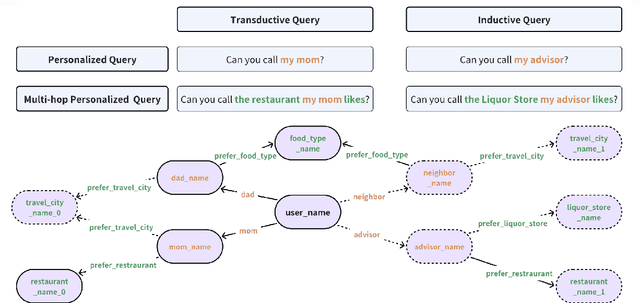

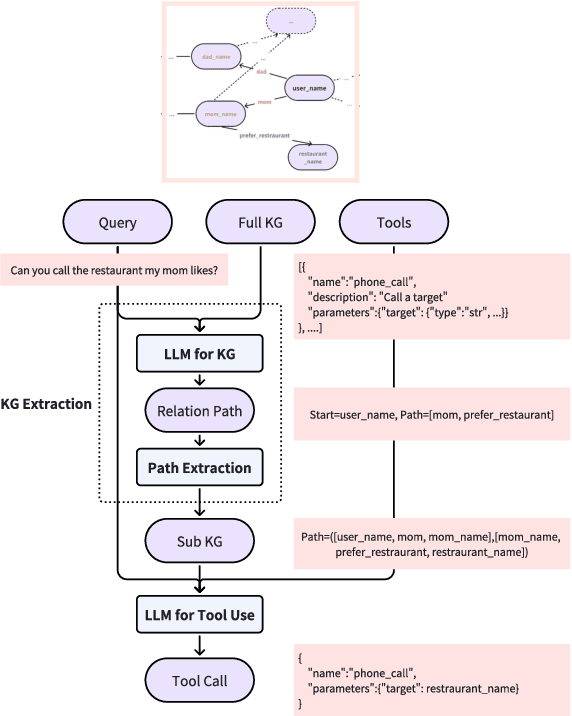
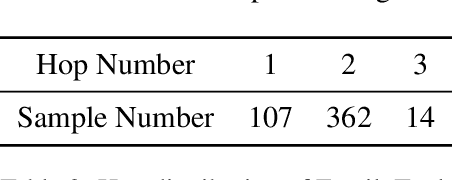
Abstract:The integration of tool learning with Large Language Models (LLMs) has expanded their capabilities in handling complex tasks by leveraging external tools. However, existing benchmarks for tool learning inadequately address critical real-world personalized scenarios, particularly those requiring multi-hop reasoning and inductive knowledge adaptation in dynamic environments. To bridge this gap, we introduce FamilyTool, a novel benchmark grounded in a family-based knowledge graph (KG) that simulates personalized, multi-hop tool use scenarios. FamilyTool challenges LLMs with queries spanning 1 to 3 relational hops (e.g., inferring familial connections and preferences) and incorporates an inductive KG setting where models must adapt to unseen user preferences and relationships without re-training, a common limitation in prior approaches that compromises generalization. We further propose KGETool: a simple KG-augmented evaluation pipeline to systematically assess LLMs' tool use ability in these settings. Experiments reveal significant performance gaps in state-of-the-art LLMs, with accuracy dropping sharply as hop complexity increases and inductive scenarios exposing severe generalization deficits. These findings underscore the limitations of current LLMs in handling personalized, evolving real-world contexts and highlight the urgent need for advancements in tool-learning frameworks. FamilyTool serves as a critical resource for evaluating and advancing LLM agents' reasoning, adaptability, and scalability in complex, dynamic environments. Code and dataset are available at Github.
How to Mitigate Overfitting in Weak-to-strong Generalization?
Mar 06, 2025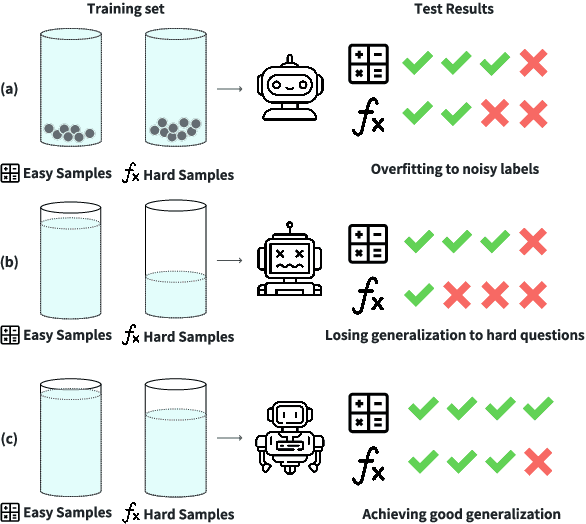

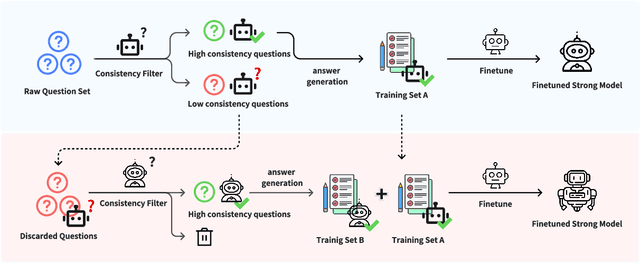
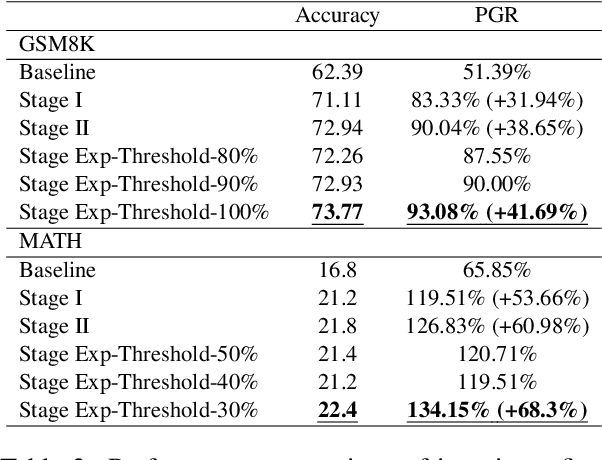
Abstract:Aligning powerful AI models on tasks that surpass human evaluation capabilities is the central problem of \textbf{superalignment}. To address this problem, weak-to-strong generalization aims to elicit the capabilities of strong models through weak supervisors and ensure that the behavior of strong models aligns with the intentions of weak supervisors without unsafe behaviors such as deception. Although weak-to-strong generalization exhibiting certain generalization capabilities, strong models exhibit significant overfitting in weak-to-strong generalization: Due to the strong fit ability of strong models, erroneous labels from weak supervisors may lead to overfitting in strong models. In addition, simply filtering out incorrect labels may lead to a degeneration in question quality, resulting in a weak generalization ability of strong models on hard questions. To mitigate overfitting in weak-to-strong generalization, we propose a two-stage framework that simultaneously improves the quality of supervision signals and the quality of input questions. Experimental results in three series of large language models and two mathematical benchmarks demonstrate that our framework significantly improves PGR compared to naive weak-to-strong generalization, even achieving up to 100\% PGR on some models.
Text Information Aggregation with Centrality Attention
Nov 16, 2020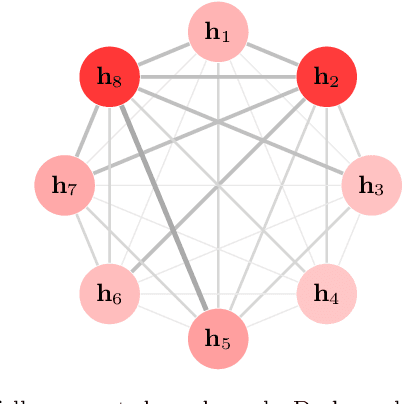

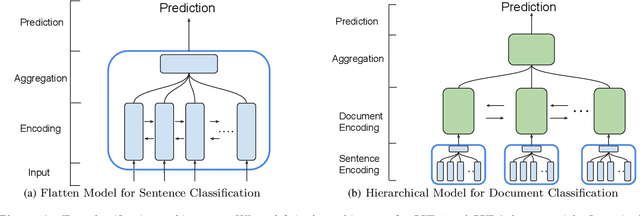
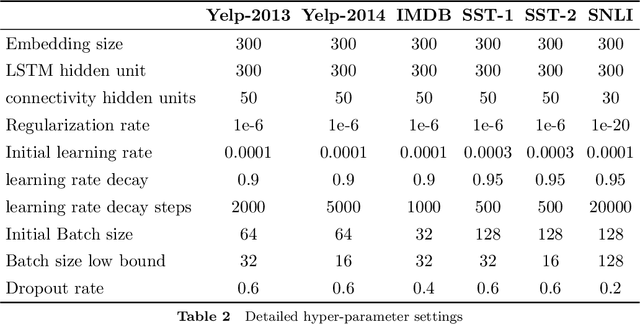
Abstract:A lot of natural language processing problems need to encode the text sequence as a fix-length vector, which usually involves aggregation process of combining the representations of all the words, such as pooling or self-attention. However, these widely used aggregation approaches did not take higher-order relationship among the words into consideration. Hence we propose a new way of obtaining aggregation weights, called eigen-centrality self-attention. More specifically, we build a fully-connected graph for all the words in a sentence, then compute the eigen-centrality as the attention score of each word. The explicit modeling of relationships as a graph is able to capture some higher-order dependency among words, which helps us achieve better results in 5 text classification tasks and one SNLI task than baseline models such as pooling, self-attention and dynamic routing. Besides, in order to compute the dominant eigenvector of the graph, we adopt power method algorithm to get the eigen-centrality measure. Moreover, we also derive an iterative approach to get the gradient for the power method process to reduce both memory consumption and computation requirement.}
Heterogeneous Graph Neural Networks for Extractive Document Summarization
Apr 26, 2020
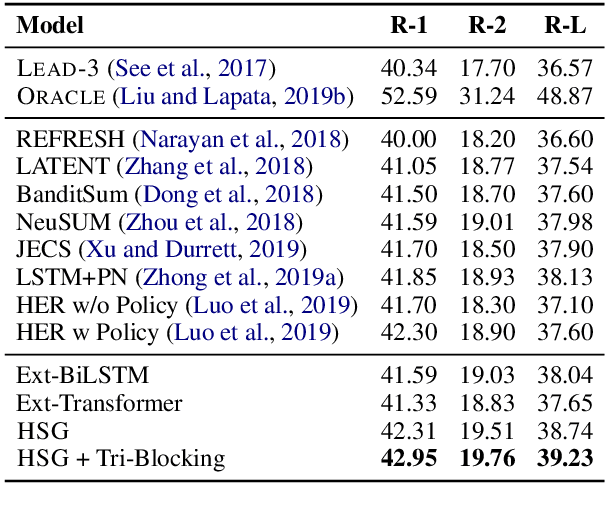


Abstract:As a crucial step in extractive document summarization, learning cross-sentence relations has been explored by a plethora of approaches. An intuitive way is to put them in the graph-based neural network, which has a more complex structure for capturing inter-sentence relationships. In this paper, we present a heterogeneous graph-based neural network for extractive summarization (HeterSumGraph), which contains semantic nodes of different granularity levels apart from sentences. These additional nodes act as the intermediary between sentences and enrich the cross-sentence relations. Besides, our graph structure is flexible in natural extension from a single-document setting to multi-document via introducing document nodes. To our knowledge, we are the first one to introduce different types of nodes into graph-based neural networks for extractive document summarization and perform a comprehensive qualitative analysis to investigate their benefits. The code will be released on Github
 Add to Chrome
Add to Chrome Add to Firefox
Add to Firefox Add to Edge
Add to Edge